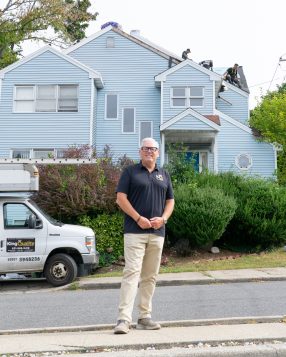Jose Martinez-Vazquez Sentenced to 20 to Life for Killing Benjamin Flores-Mendez and Tiffany Diaz-Cabrera Sentenced to 15 to Life for Acting as a Lookout
Suffolk County District Attorney Raymond A. Tierney announced on Oct. 7 that Jose Martinez-Vazquez, 25, and Tiffany Diaz-Cabrera, 21, both of Port Jefferson Station, have been sentenced for their respective roles in the fatal stabbing of Benjamin Flores- Mendez, 39, also of Port Jefferson Station. Martinez-Vazquez pleaded guilty to Murder in the Second Degree, for fatally stabbing Flores-Mendez. Diaz-Cabrera pleaded guilty to Manslaughter in the First Degree, for acting as a look out while the stabbing took place.
“The lengthy prison terms handed down to both defendants reflect the severity of their actions and our commitment to public safety,” said District Attorney Tierney. “This brutal attack on our greenway trail – a place meant for recreation and community gathering – shook our citizens to the core. With these sentences, we hope to restore a sense of security to our public spaces and deter future acts of violence.”
According to court documents and the defendants’ admissions during their guilty plea allocutions,
on June 17, 2021, Martinez-Vasquez and Diaz-Cabrera followed the victim into the Port Jefferson Station entrance of the Setauket-Port Jefferson Station Greenway Trail.
Martinez-Vazquez admitted to fatally stabbing the victim multiple times while Diaz-Cabrera, Martinez-Vazquez’s girlfriend, served as his lookout. The victim was later discovered lying in the entrance of the trail by Good Samaritans.
On March 5, 2023, Suffolk County homicide detectives arrested both defendants.
On July 25, 2024, Martinez-Vazquez pleaded guilty to Murder in the Second Degree, a Class A violent felony. On August 28, 2024, Martinez-Vazquez was sentenced to 20 years to life in prison. He was represented by John Halverson, Esq.
On April 22, 2024, Diaz-Cabrera pleaded guilty to Manslaughter in the First Degree, a Class B violent felony. On October 7, 2024, Diaz-Cabrera was sentenced to 15 years in prison followed by five years of post-release supervision. She was represented by Luigi Belcastro, Esq.
This case was prosecuted by Assistant District Attorney Elena Tomaro of the Homicide Bureau and Assistant District Attorney Tara Laterza of the Child Abuse and Domestic Violence Bureau, and the investigation was conducted by Detective James Hughes of the Suffolk County Police Department’s Homicide Squad.













































